- Home
- Tom Clancy
SSN Page 9
SSN Read online
Page 9
“Conn, sonar, aye. No contacts,” replied the sonar supervisor.
“Conn, radio, aye… manned and ready.” That acknowledgment came from the communicator.
“Diving officer, make your depth six zero feet smartly,” ordered the OOD as he raised the Type 18 periscope and started his underwater visual sweeps to make sure there were no dead-in-the-water underwater hulls for Cheyenne to run into during this last, most tenuous part of the trip to periscope depth.
“Make my depth six zero feet, smartly,” answered the diving officer. “Smartly” meant that the diving officer would maintain the two-thirds bell as he ordered the helmsman to fifteen rise on the bow planes and ordered the planesman to a fifteen degree up bubble. Using the stern planes to control Cheyenne’s angle, the bubble would be eased as Cheyenne was nearing eighty feet for the final glide to sixty feet.
“Seven zero, six five, six four, six three, six two,” the diving officer said, counting down their depths.
When the count hit six two, the OOD called out, “Braking,” and quickly swung the periscope through a 360-degree arc. A moment later he said, “No visual contacts, Captain.” There were a number of radar contacts chirping over the Type 18 ESM receiver, but the periscope wasn’t picking up any visuals.
“Ahead one third,” Mack ordered quietly to the OOD, not wanting to be entered in the deck log as having assumed the conn.
“Conn, ESM, I have five ESM contacts, one a Chinese radar, and four Russian radars. HULTEC indicates a Han class, three Kilo class, and one Alfa class. The closest is the Han at signal strength three and increasing.”
Captain Mackey and the OOD looked at each other with surprise.
Mack turned to the microphone. “ESM, Captain,” he said, “are you sure about that Alfa?”
“Yes, sir, Captain,” answered the voice of the NSG OIC. “It’s an Alfa. We’ve seen him, this particular one, in the North Fleet numerous times. No mistaking it, sir. He’s well registered in our computer database.”
“Executive officer,” spoke the captain calmly as he turned to the executive officer standing aft in the darkness of the rig for black. “Are you back there?”
“Yes, Captain. Should I draft a message report on the Alfa?”
“Please do so. Release it when ready. We need to find out what gives.” The Alfa was designated Master 31, the Han Master 32, and the three Kilos Masters 33, 34, and 35.
In less than half an hour, Cheyenne’s flash message report had been sent and answered by the communicators at CTF 74 headquarters in Yokosuka.
Mack read the CTF message and filled in his executive officer on what he’d learned. “ESM is right. It seems the ’friendly’ Russians have sold a North Fleet Alfa to the Chinese,” he said, “who then crewed it and overhauled it, apparently at Cuarteron Reef. How many more Alfas are being transferred to China is anybody’s guess at this time. Naval intelligence is working on the problem. They’re paying special attention to the recent lack of openness of the Russian submarine bases at Vladivostok and Petropavlosk.”
Mack chose this method of informing his executive officer, rather than filling him in during a private briefing, because he’d made a policy of ensuring that all his crewmen were knowledgeable about any enemy they were likely to encounter.
Because of this, the messenger of the watch — who had heard the initial ESM report but not the follow up — knew, or thought he knew, the implication of an Alfa, a Russian submarine, in the immediate area. The messenger of the watch quickly spread the word through the crew’s mess as he stood there with his red goggles on, drawing coffee for the control room watch standers. The movie operator even shut down the movie and turned on the lights so they could all discuss the new information.
But for all Mack’s openness, the crew was never as well informed as the officers. In this case, because the messenger of the watch had been sent for coffee before hearing Mack’s final report, none of the crew on board Cheyenne knew that the Alfa was manned not by Russians but by Chinese sailors.
The captain called for an immediate meeting of all officers in the wardroom to share with them the new intelligence on the Alfa, manned by Chinese, and its current exodus with a Han and three Kilo SSKs. He expected the SSNs to wait for deep water before diving, but anticipated the Kilos would dive in twenty fathoms.
That was as far as Mack got before the OOD called him on the sound-powered phones, allowing the mess specialist to sneak out of the wardroom galley and pass the word on the Chinese crew to the already buzzing crew’s mess.
“Captain, ESM reports the Kilo radars and the Han radar have shut down. They were drawing left while the Alfa radar is still drawing right.”
“Okay, men. We have our work cut out for us. The three Kilos and the Han have probably submerged. And the Alfa may be trying to do an end around to get behind us. It’s time to man battle stations.”
Mack’s reading of the situation was correct. Sonar had just finished reporting tonals from the Han SSN to the conn as the captain arrived and ordered the OOD to man battle stations torpedo. There was still nothing from the Kilos acoustically, but the Alfa had also shut down its radar — last bearing due south of Cheyenne.
As directed by the captain, who was now the conning officer, the executive officer, in his role as the fire control coordinator, passed the order to the torpedo room over the sound-powered phones, “Torpedo room, fire control, make tubes one and two ready in all respects, including opening the outer doors.” He wanted to get the tubes ready as early as possible and as far from the enemy submarines as possible.
The order from the captain, carried by the open microphone at the periscope stand, alerted the sonar operators that noisy evolutions would be taking place near the BSY-1 spherical array so they could attenuate the sound level reaching their sensitive ears.
The torpedo room crew acknowledged the order. “Make tubes one and two ready in all respects, including opening the outer doors, fire control, torpedo room, aye.”
Moments later, the torpedo room reported completing the ordered evolution with the torpedo tubes. The executive officer relayed the information to Mack. “Captain, tubes one and two are ready in all respects. Both outer doors are open.”
“Very well, fire control,” answered the captain.
The Han was drawing left and closing. It was not quiet by any means, and was easily tracked by the TB-16, spherical, and conformal arrays at the same time. The inputs to the three BSY-1 computers made the solution a snap for the fire-control party.
When the BSY-1 operator and the fire-control coordinator were satisfied with the TMA (target motion analysis) solution on Master 32, the Chinese Han class attack submarine, the captain ordered, “Firing point procedures, Master 32.”
The combat systems officer reported the target course, speed, and range.
“Sonar, conn, stand by,” ordered the captain.
“Conn, sonar, standing by.”
“Match sonar bearings and shoot, tubes one and two, Master 32.”
“Match sonar bearings and shoot, tubes one and two, Master 32, aye.”
After the large piston of the torpedo-ejection pump ram drove home, the Mk 48 ADCAP torpedoes were ejected from their resting places at the same time that their Otto fuel engines were coming up to full speed. “Tubes one and two fired electrically,” reported the combat systems officer.
“Conn, sonar, units from tubes one and two running hot, straight, and normal,” came the report from the sonar supervisor as the two torpedoes executed their wire clearance maneuvers and accelerated rapidly to fifty knots en route to convergence with the Chinese submarine.
“Very well, sonar,” Mack said. Then, a moment later, he asked, “Time to acquisition?”
“Eight minutes, Captain,” answered the combat systems officer.
To Mack, it seemed like an eternity before he heard, “Unit one has acquired… Unit two has acquired.”
“Cut the wires, shut the outer doors, and reload tubes one and two,” M
ack ordered now that the Chinese submarine’s fate was in the hands of the Mk 48s. There was no escaping their relentless attack. The subsequent reverberations and breaking up sounds were deafening.
“Conn, sonar, we have a torpedo in the water, SET-53, bearing 089!” The sonar supervisor’s excited report came just as the ocean started to quiet. Apparently the Han CO had launched a snap shot at the bearing of the incoming torpedoes as part of a last-ditch effort prior to his certain death.
“Right full rudder, all ahead flank. Cavitate. Make your depth one thousand feet,” Mack said, followed rapidly by his calm, but forceful words over Cheyenne’s 1MC, “Rig ship for depth charge.”
With the ship already at battle stations, the reports from Cheyenne’s various compartments came in quickly to the chief of the watch at the ballast control panel. The engineering officer of the watch (EOOW) had ordered main coolant pumps shifted to fast speed, and the throttle man answered the ordered bell as soon as the pumps were reported in fast speed by the reactor operator.
In fact, the throttle man was a little quicker than the EOOW had expected. With the precision of his training, he had acknowledged the engine order telegraph backup to the captain’s orders and was already nearing 50 percent steam flow. Now he was just waiting for the chance to complete his spinning open the main engine throttles, which he couldn’t do until the steam generator automatic level controls allowed him to. The safeguards were there to prevent excessive level swell, which might result in carry-over of water into the steam piping.
Within minutes, Cheyenne was at flank speed, on course 185, and at one thousand feet. The bearing rate presented to the Chinese torpedo made no difference as the SET-53 locked on to the knuckle created by Cheyenne‘s powerful maneuver. That was a direct result of Mack’s order to cavitate, and had formed over a thousand yards away from Cheyenne’s current position.
“Conn, sonar, two explosions, bearing 055, range 8,540 yards.” Knowing the depth of water and the sound velocity profile, sonar could determine the range by the difference in time between the direct path and the bottom bounce path of the incoming explosion noises.
Above the cheers in the control room, Captain Mackey ordered, “Chief of the watch, over the 1MC, secure from rig ship for depth charge.”
When the word was passed, Mack picked up the 1MC microphone and spoke to the officers and men of Cheyenne. “This is the captain. Gentlemen, Cheyenne has sent another enemy submarine to its fiery grave. Excellent work. You can be truly proud of your teamwork, each and every one of you. Cheyenne is you. Carry on.”
Replacing the microphone, he added, “Chief of the watch, secure from battle stations.” Mack knew that the stand-down from the tension could easily be short lived, especially if the Han had been accompanied by quieter Kilo class diesels running on their batteries.
The officers adjourned to the wardroom for the captain’s standard critique of the attack. Mack also had every battle stations sonar man there. This review was very positive, but Mack added a note of caution about not allowing their guard down. This was war, he pointed out, and the Chinese shouldn’t be expected to sit back and watch their submarine force be devastated. Cheyenne and her crew needed to proceed with caution back to an interdiction point so that they could detect and attack some of those Kilos.
Mack’s plan was a good one, but it was circumvented by events. Even as he was critiquing their most recent battle, sonar reported regaining contact on the Alfa, Master 31. The Alfa was proceeding north toward the sounds of the Han’s demise, and Cheyenne’s turn toward the south during the torpedo evasion nicely closed the range.
Mack’s attack on the Alfa started out the same as the attack on the Han, except that this time Captain Mackey elected to exercise torpedo tubes three and four. But that was as far as the similarity went. The Alfa, with its forty-knot speed, was able to evade both torpedoes.
The Chinese had learned to drive the Alfa, Mack realized, but fortunately they still had things to learn about their submarine. If that had been a Russian crew on board that submarine, Cheyenne might have had to contend with their torpedoes.
Mack wasn’t ready to take on the Kilo SSKs, which were probably lurking in the shoals while communicating with the Alfa, so he decided to withdraw to the deep water to the northwest. From there he could report the Han and Alfa attacks to CTF 74. He didn’t need to return to McKee yet since Cheyenne still had sixteen torpedoes. And he had to clear the area before Independence could steam north to the Spratlys.
His message was quickly acknowledged by CTF 74, who passed traffic from the SEC and ASWC on board Independence. Cheyenne turned to the southwest and prepared herself for shallow water operations.
* * *
“Conn, sonar, sonar contact bearing 195. Sounds like the Alfa, Master 31, coming back for more.”
The captain ordered the towed array to short stay as Cheyenne ventured inside the 100-fathom curve south of Fiery Cross Reef. He intended to confuse the Chinese by operating in the shallow water. The Alfa SSN, he knew, would remain outside the shoals, unable to hear Cheyenne until — if things went according to plan — it was too late. A shorter range attack would preclude the Alfa from responding and evading the torpedoes.
Battle stations were manned once again as the range to the Alfa closed to inside 40,000 yards — and none too soon, as sonar reported transient noises bearing 125 and 135. Mack nodded. As he’d expected, the Alfa was out in deeper water, but the Chinese Kilos had remained in the shoal waters, massing for guerrilla operations against Cheyenne.
They could have been a problem, but Cheyenne was ready with two outer doors already open.
“Snap shots, tubes one and two, bearings 125 and 135 respectively,” Mack ordered. That order meant that the Mk 48s would have to do their own thing in detecting, tracking, and sinking two of the Kilos, but Mack didn’t have the luxury of assisting them.
It worked. The two torpedoes quickly acquired the Kilos. The two SSKs tried to flee, increasing speed and cavitating heavily, but to no avail. Both torpedoes found their marks and destroyed the SSKs, but Mack wasn’t satisfied. Where was the third Kilo? he wondered.
He didn’t have long to wait before finding out.
“Conn, sonar, we have transients bearing 180 that sound like Christmas balls falling off a tree and breaking… like a tinkling sound. Seems that the third Kilo was spooked by our torpedoes and ran into a coral reef.”
Mack grinned. He was happy to take the kills any way he could. Only the Alfa remained, and Cheyenne had lost contact after the first explosion against the Kilos.
Sonar was not able to reacquire the Russian submarine, and Mack gave the orders to take Cheyenne out of the area. They’d have another chance at the Alfa, he hoped, before he had to submit the next patrol report.
The only question that was bothering him was how the Alfa had slipped away. He hadn’t expected that from a Chinese crew on a Russian submarine.
Then Cheyenne moved into deeper waters. As she resumed her patrol, Mack found himself wondering whether the Alfa had acquired a Russian adviser, or, worse, a full Russian crew.
* * *
A few days later, Cheyenne had been ordered to head to the south to meet up with McKee, anchored near Brunei, for a quick reload and resupply. Then she was to rendezvous with the Independence Battle Group and await further orders from CTF 74. Mack didn’t know it yet, but they would not have the chance for a briefing in McKee’s war room for some time to come.
5. Interdiction
The Independence Battle Group, to which Cheyenne was assigned as the sole SSN(DS), was operating south of the Spratly Islands. Having completed a quick reload and resupply, Cheyenne was with them, patrolling around their position, keeping the surface ships safe. Only this time, Mack’s patrol area was not the forward 180 degrees, which he preferred. Instead, it was an area the shape of a donut: a full 360-degree annulus, centered on Independence, with an inner diameter of forty nautical miles and an outer diameter of eighty nautical miles.
Mack didn’t like being reined in like that.
“Radio, conn, stream the floating wire,” the OOD ordered.
“Conn, radio, stream the floating wire, aye, sir.”
Cheyenne’s floating wire communications antenna was functionally similar to the communications buoys carried by Ohio class Trident ballistic missile submarines. Cheyenne could deploy this wire from depth, without having to raise a communications mast above the surface.
“Incoming message traffic,” the communicator said. He’d learned his lesson from their previous patrol and did not speculate on their new orders.
The OOD acknowledged and summoned both the captain and the executive officer to the conn.
Mack arrived in a few minutes along with the executive officer. Captain Mackey read the message, passed it to the executive officer, and then called a meeting in the wardroom. He requested that the communicator, the executive officer, the combat systems officer, and the engineer officer be present.
“We have our new orders,” Mack said as the briefing began. “Naval intelligence has determined that a large Chinese surface task group has been sighted leaving Zhanjiang Naval Base, China. Satellite reconnaissance has confirmed this information. The task group is expected to form in the Mandarin Sea south of that base. All information indicates that they are headed in the direction of the Spratly Islands. Normally, they would be taken care of by aircraft and surface units. However, the Navy doesn’t want to send the carrier too far north as yet, or to divert any of the carrier’s defensive escorts away from their protective zone. They are worried about a Chinese air attack on the Battle Group.”
Mack looked around at his officers. They were a good group, and getting better with every mission. His last post-attack critique had reinstilled the need for redundancy, the formal repeat backs, during the attack phase. There was no room for error.
“Our orders,” he went on, “are to detach from the Battle Group and proceed north of the Spratly Islands to attack the Chinese task group.”

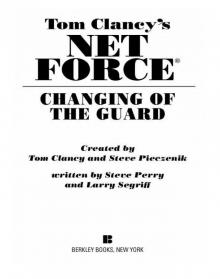 Changing of the Guard
Changing of the Guard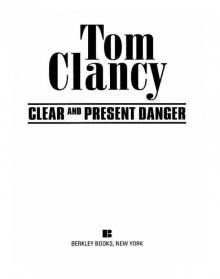 Clear and Present Danger
Clear and Present Danger Hounds of Rome
Hounds of Rome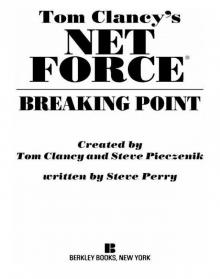 Breaking Point
Breaking Point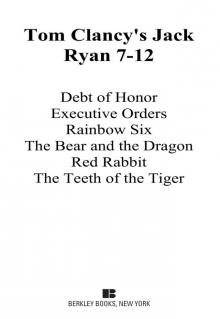 Tom Clancy's Jack Ryan Books 7-12
Tom Clancy's Jack Ryan Books 7-12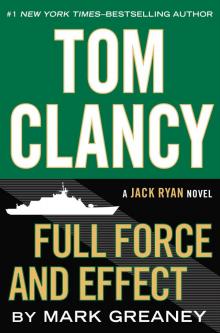 Full Force and Effect
Full Force and Effect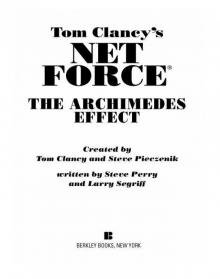 The Archimedes Effect
The Archimedes Effect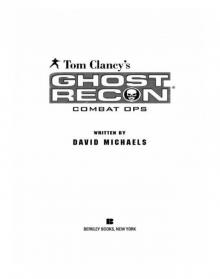 Combat Ops
Combat Ops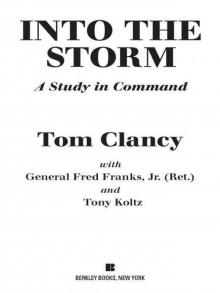 Into the Storm: On the Ground in Iraq
Into the Storm: On the Ground in Iraq Under Fire
Under Fire Point of Impact
Point of Impact Red Rabbit
Red Rabbit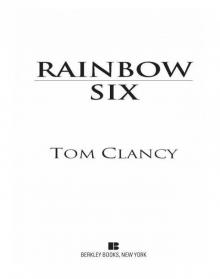 Rainbow Six
Rainbow Six The Hunt for Red October
The Hunt for Red October The Teeth of the Tiger
The Teeth of the Tiger Conviction (2009)
Conviction (2009)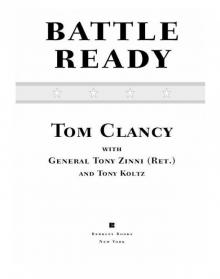 Battle Ready
Battle Ready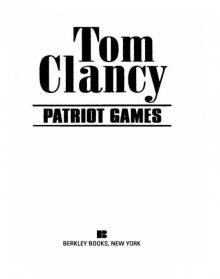 Patriot Games
Patriot Games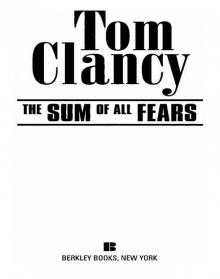 The Sum of All Fears
The Sum of All Fears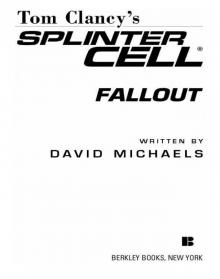 Fallout (2007)
Fallout (2007) Red Storm Rising
Red Storm Rising The Cardinal of the Kremlin
The Cardinal of the Kremlin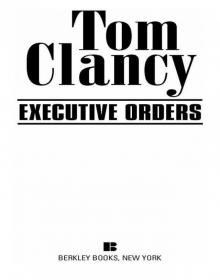 Executive Orders
Executive Orders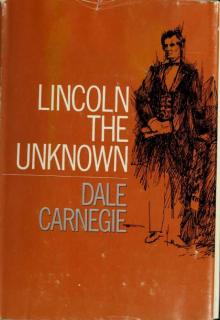 Lincoln, the unknown
Lincoln, the unknown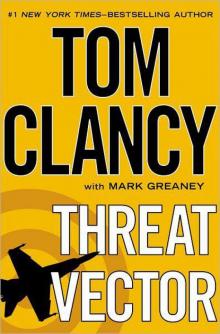 Threat Vector
Threat Vector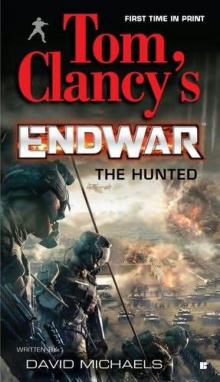 The Hunted
The Hunted Shadow Warriors: Inside the Special Forces
Shadow Warriors: Inside the Special Forces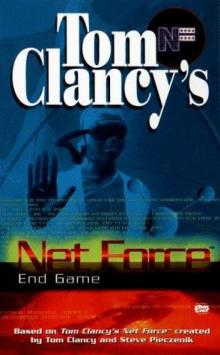 End Game
End Game Special Forces: A Guided Tour of U.S. Army Special Forces
Special Forces: A Guided Tour of U.S. Army Special Forces Locked On
Locked On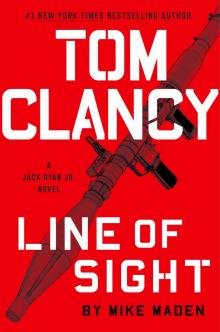 Line of Sight
Line of Sight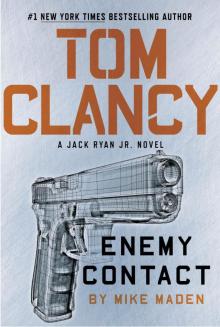 Tom Clancy Enemy Contact - Mike Maden
Tom Clancy Enemy Contact - Mike Maden Fighter Wing: A Guided Tour of an Air Force Combat Wing
Fighter Wing: A Guided Tour of an Air Force Combat Wing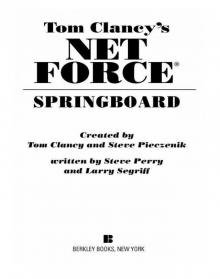 Springboard
Springboard Line of Sight - Mike Maden
Line of Sight - Mike Maden EndWar
EndWar Dead or Alive
Dead or Alive Tom Clancy Support and Defend
Tom Clancy Support and Defend Checkmate
Checkmate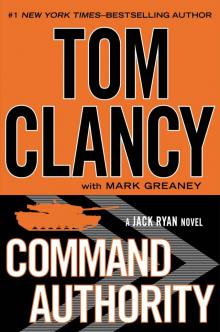 Command Authority
Command Authority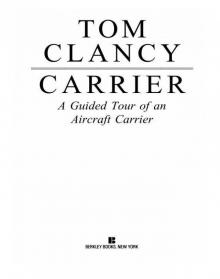 Carrier: A Guided Tour of an Aircraft Carrier
Carrier: A Guided Tour of an Aircraft Carrier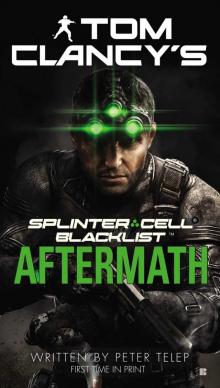 Blacklist Aftermath
Blacklist Aftermath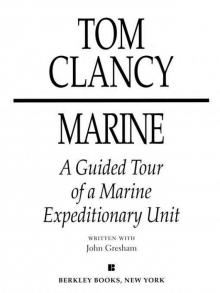 Marine: A Guided Tour of a Marine Expeditionary Unit
Marine: A Guided Tour of a Marine Expeditionary Unit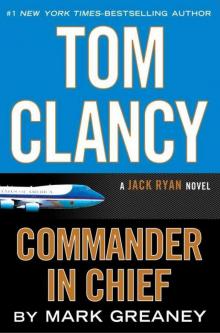 Commander-In-Chief
Commander-In-Chief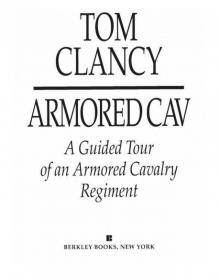 Armored Cav: A Guided Tour of an Armored Cavalry Regiment
Armored Cav: A Guided Tour of an Armored Cavalry Regiment Tom Clancy's Jack Ryan Books 1-6
Tom Clancy's Jack Ryan Books 1-6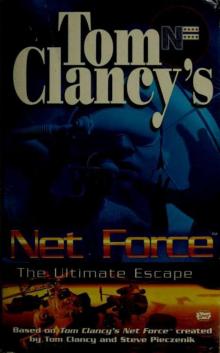 The Ultimate Escape
The Ultimate Escape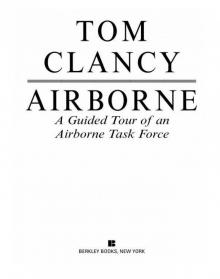 Airborne: A Guided Tour of an Airborne Task Force
Airborne: A Guided Tour of an Airborne Task Force Debt of Honor
Debt of Honor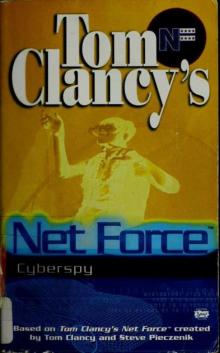 Cyberspy
Cyberspy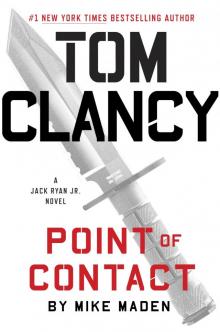 Point of Contact
Point of Contact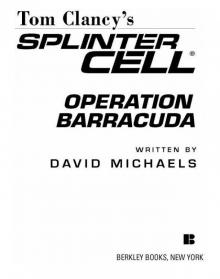 Operation Barracuda (2005)
Operation Barracuda (2005)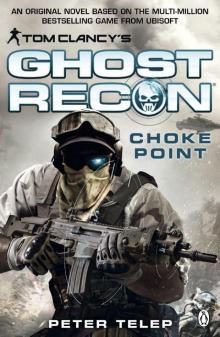 Choke Point
Choke Point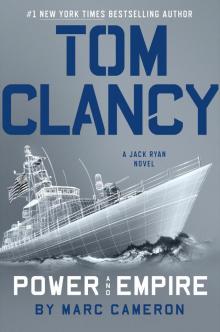 Power and Empire
Power and Empire Every Man a Tiger: The Gulf War Air Campaign
Every Man a Tiger: The Gulf War Air Campaign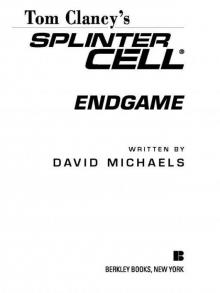 Endgame (1998)
Endgame (1998)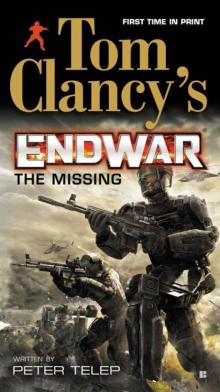 EndWar: The Missing
EndWar: The Missing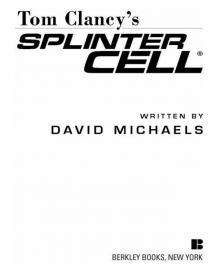 Splinter Cell (2004)
Splinter Cell (2004)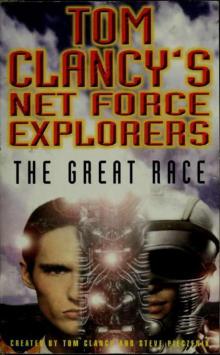 The Great Race
The Great Race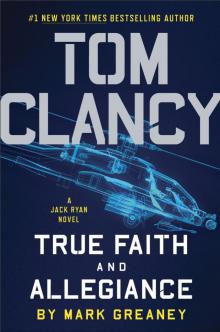 True Faith and Allegiance
True Faith and Allegiance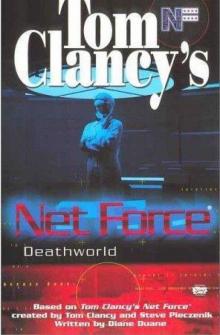 Deathworld
Deathworld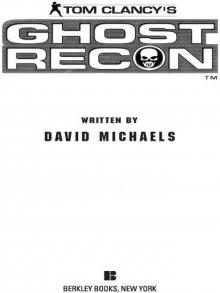 Ghost Recon (2008)
Ghost Recon (2008)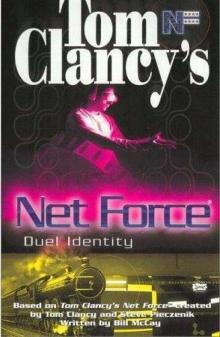 Duel Identity
Duel Identity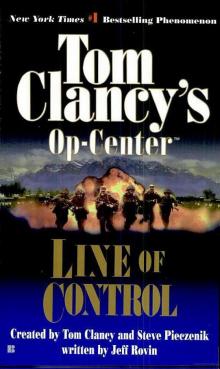 Line of Control o-8
Line of Control o-8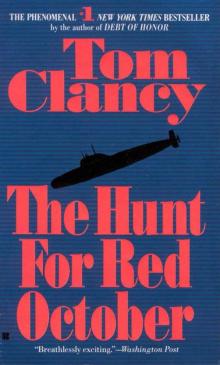 The Hunt for Red October jr-3
The Hunt for Red October jr-3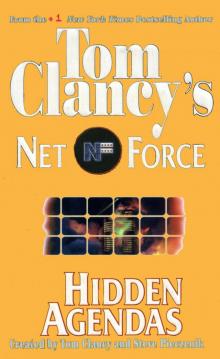 Hidden Agendas nf-2
Hidden Agendas nf-2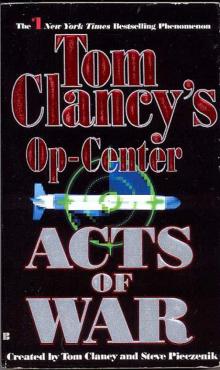 Acts of War oc-4
Acts of War oc-4 Ruthless.Com pp-2
Ruthless.Com pp-2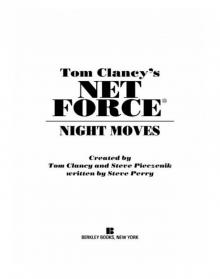 Night Moves
Night Moves The Hounds of Rome - Mystery of a Fugitive Priest
The Hounds of Rome - Mystery of a Fugitive Priest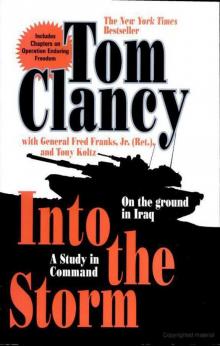 Into the Storm: On the Ground in Iraq sic-1
Into the Storm: On the Ground in Iraq sic-1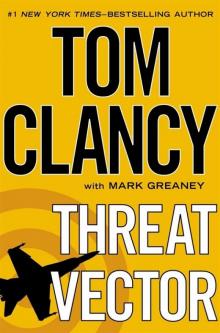 Threat Vector jrj-4
Threat Vector jrj-4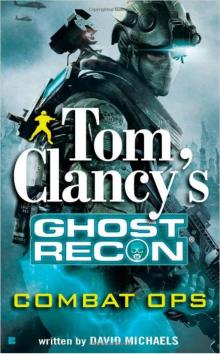 Combat Ops gr-2
Combat Ops gr-2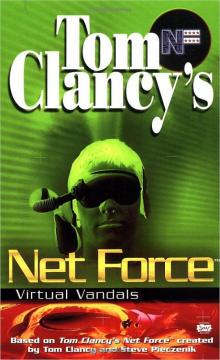 Virtual Vandals nfe-1
Virtual Vandals nfe-1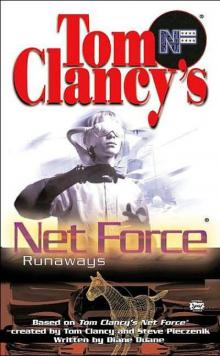 Runaways nfe-16
Runaways nfe-16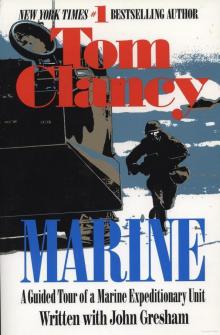 Marine: A Guided Tour of a Marine Expeditionary Unit tcml-4
Marine: A Guided Tour of a Marine Expeditionary Unit tcml-4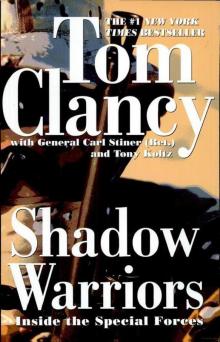 Shadow Warriors: Inside the Special Forces sic-3
Shadow Warriors: Inside the Special Forces sic-3 Jack Ryan Books 1-6
Jack Ryan Books 1-6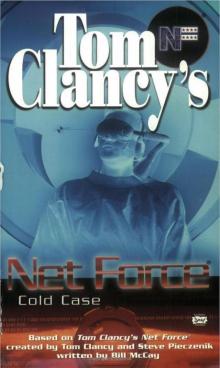 Cold Case nfe-15
Cold Case nfe-15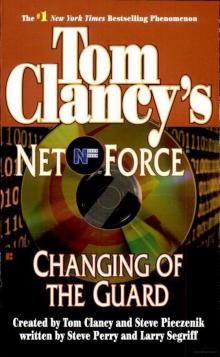 Changing of the Guard nf-8
Changing of the Guard nf-8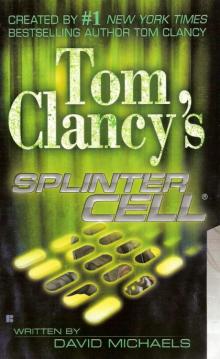 Splinter Cell sc-1
Splinter Cell sc-1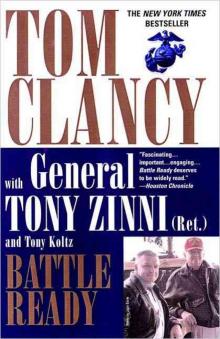 Battle Ready sic-4
Battle Ready sic-4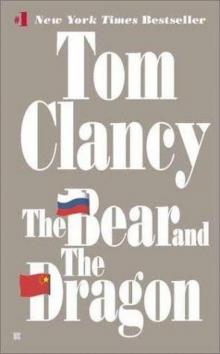 The Bear and the Dragon jrao-11
The Bear and the Dragon jrao-11 Fighter Wing: A Guided Tour of an Air Force Combat Wing tcml-3
Fighter Wing: A Guided Tour of an Air Force Combat Wing tcml-3 Patriot Games jr-1
Patriot Games jr-1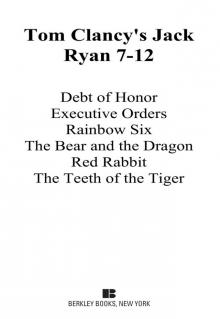 Jack Ryan Books 7-12
Jack Ryan Books 7-12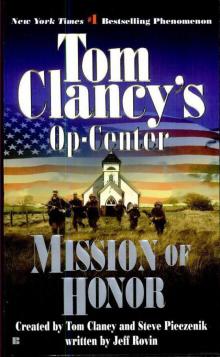 Mission of Honor o-9
Mission of Honor o-9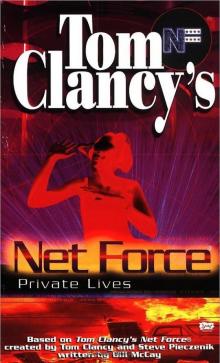 Private Lives nfe-9
Private Lives nfe-9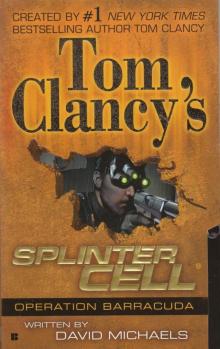 Operation Barracuda sc-2
Operation Barracuda sc-2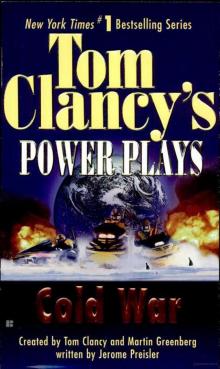 Cold War pp-5
Cold War pp-5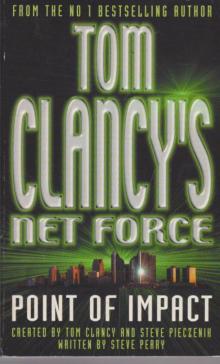 Point of Impact nf-5
Point of Impact nf-5 Red Rabbit jr-9
Red Rabbit jr-9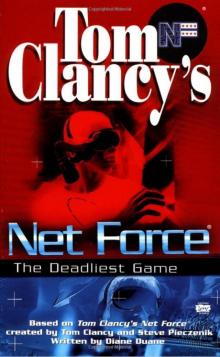 The Deadliest Game nfe-2
The Deadliest Game nfe-2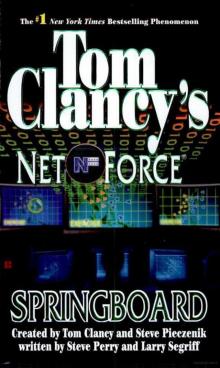 Springboard nf-9
Springboard nf-9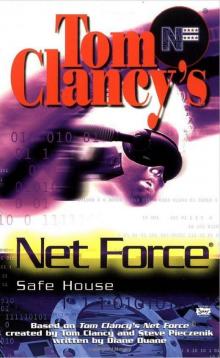 Safe House nfe-10
Safe House nfe-10 EndWar e-1
EndWar e-1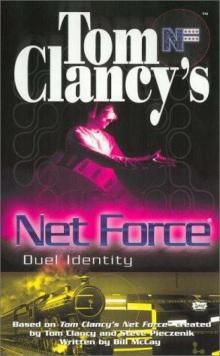 Duel Identity nfe-12
Duel Identity nfe-12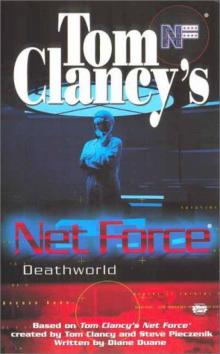 Deathworld nfe-13
Deathworld nfe-13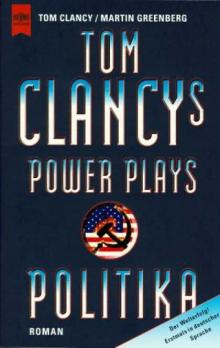 Politika pp-1
Politika pp-1 Rainbow Six jr-9
Rainbow Six jr-9 Tom Clancy's Power Plays 1 - 4
Tom Clancy's Power Plays 1 - 4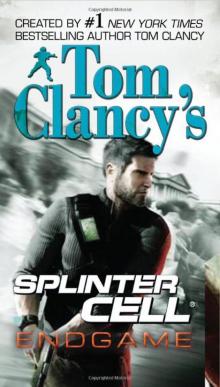 Endgame sc-6
Endgame sc-6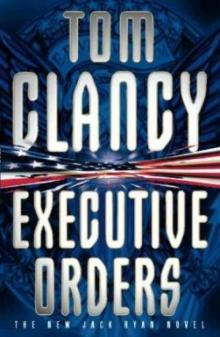 Executive Orders jr-7
Executive Orders jr-7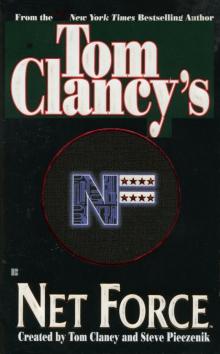 Net Force nf-1
Net Force nf-1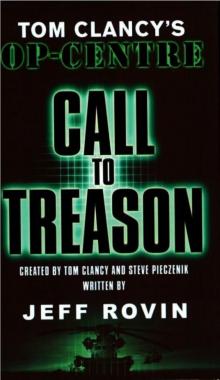 Call to Treason o-11
Call to Treason o-11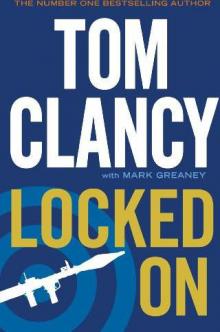 Locked On jrj-3
Locked On jrj-3 Against All Enemies
Against All Enemies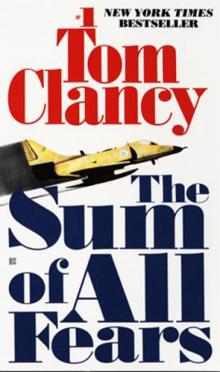 The Sum of All Fears jr-7
The Sum of All Fears jr-7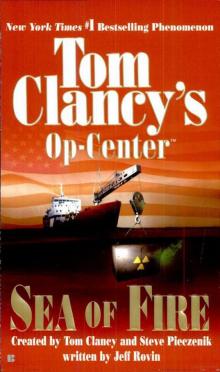 Sea of Fire o-10
Sea of Fire o-10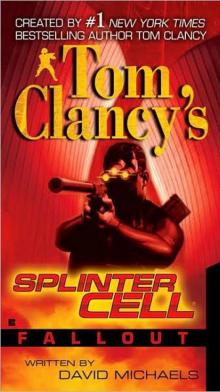 Fallout sc-4
Fallout sc-4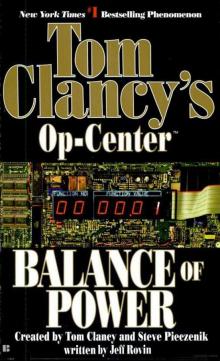 Balance of Power o-5
Balance of Power o-5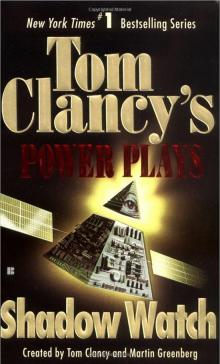 Shadow Watch pp-3
Shadow Watch pp-3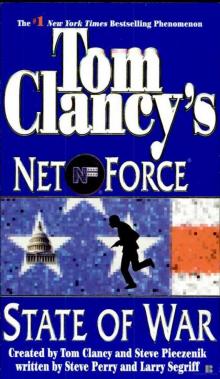 State of War nf-7
State of War nf-7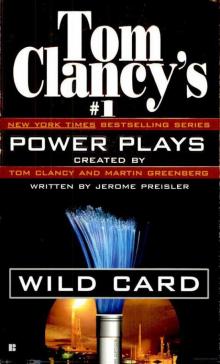 Wild Card pp-8
Wild Card pp-8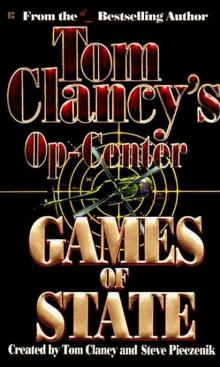 Games of State o-3
Games of State o-3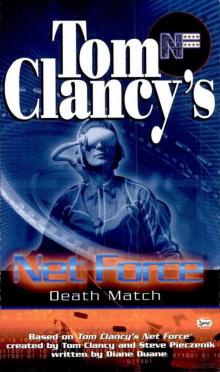 Death Match nfe-18
Death Match nfe-18 Against All Enemies mm-1
Against All Enemies mm-1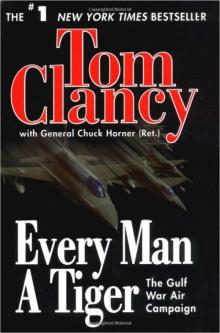 Every Man a Tiger: The Gulf War Air Campaign sic-2
Every Man a Tiger: The Gulf War Air Campaign sic-2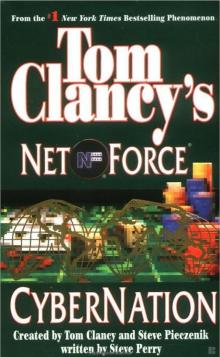 Cybernation nf-6
Cybernation nf-6 Support and Defend
Support and Defend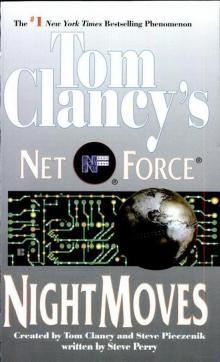 Night Moves nf-3
Night Moves nf-3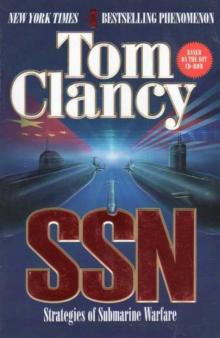 SSN
SSN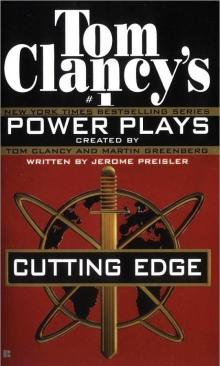 Cutting Edge pp-6
Cutting Edge pp-6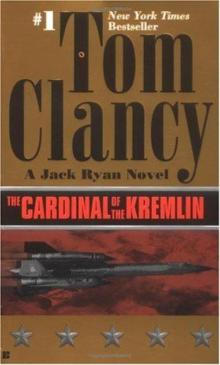 The Cardinal of the Kremlin jrao-5
The Cardinal of the Kremlin jrao-5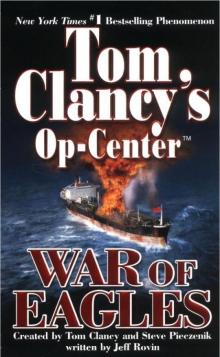 War of Eagles o-12
War of Eagles o-12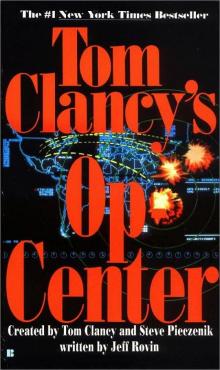 Op-Center o-1
Op-Center o-1 Mirror Image o-2
Mirror Image o-2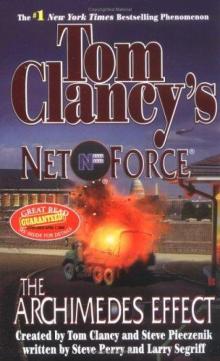 The Archimedes Effect nf-10
The Archimedes Effect nf-10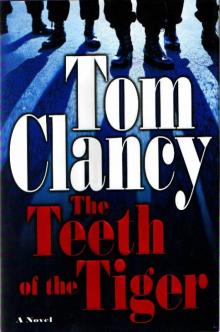 Teeth of the Tiger jrj-1
Teeth of the Tiger jrj-1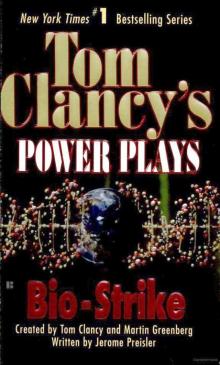 Bio-Strike pp-4
Bio-Strike pp-4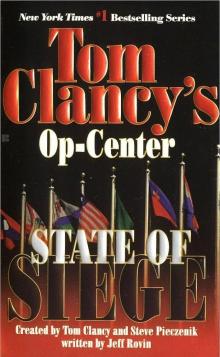 State of Siege o-6
State of Siege o-6 Debt of Honor jr-6
Debt of Honor jr-6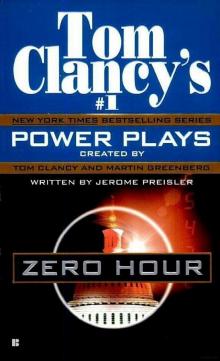 Zero Hour pp-7
Zero Hour pp-7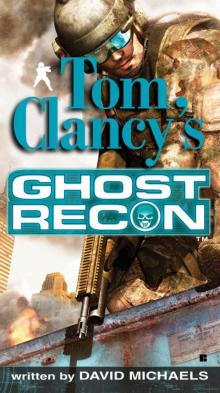 Ghost Recon gr-1
Ghost Recon gr-1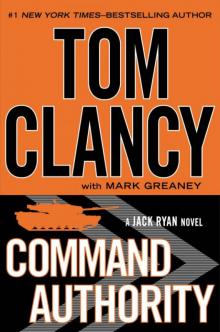 Command Authority jr-10
Command Authority jr-10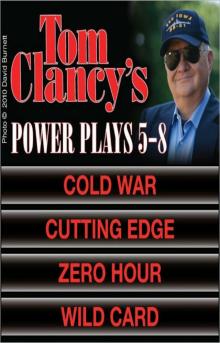 Tom Clancy's Power Plays 5 - 8
Tom Clancy's Power Plays 5 - 8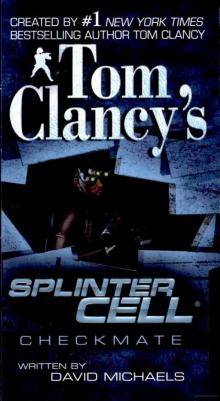 Checkmate sc-3
Checkmate sc-3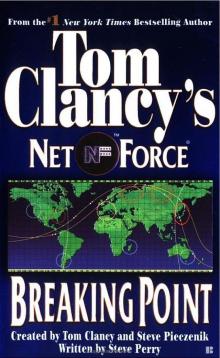 Breaking Point nf-4
Breaking Point nf-4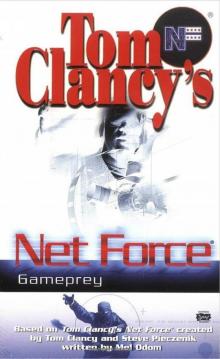 Gameprey nfe-11
Gameprey nfe-11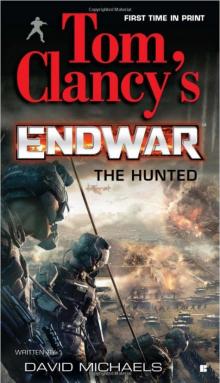 The Hunted e-2
The Hunted e-2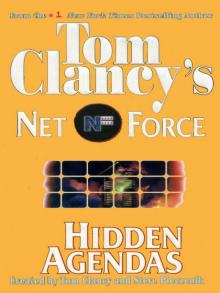 Hidden Agendas
Hidden Agendas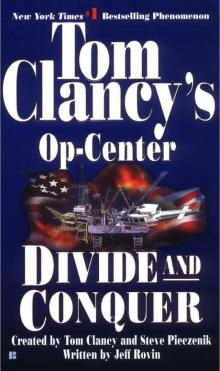 Divide and Conquer o-7
Divide and Conquer o-7